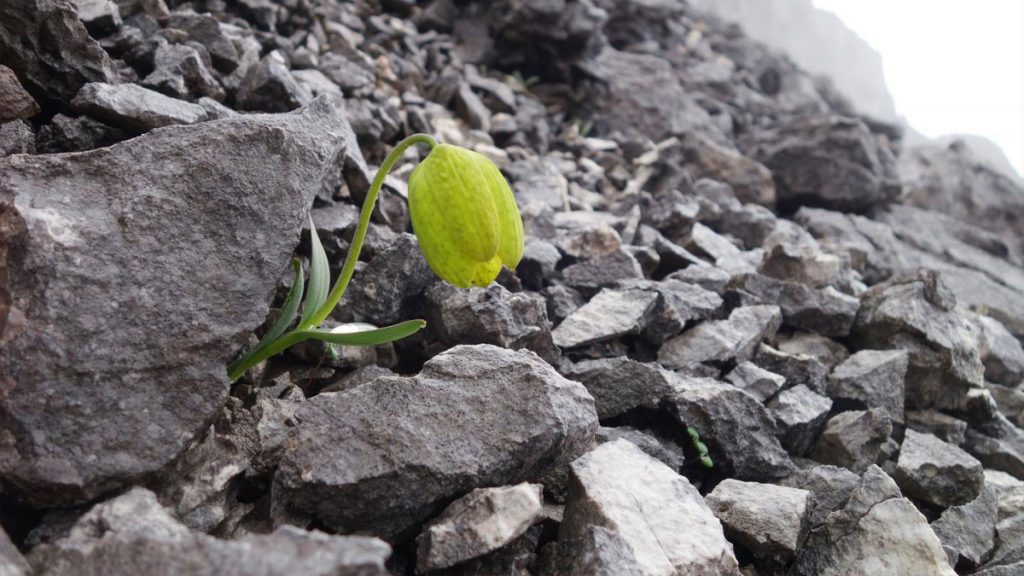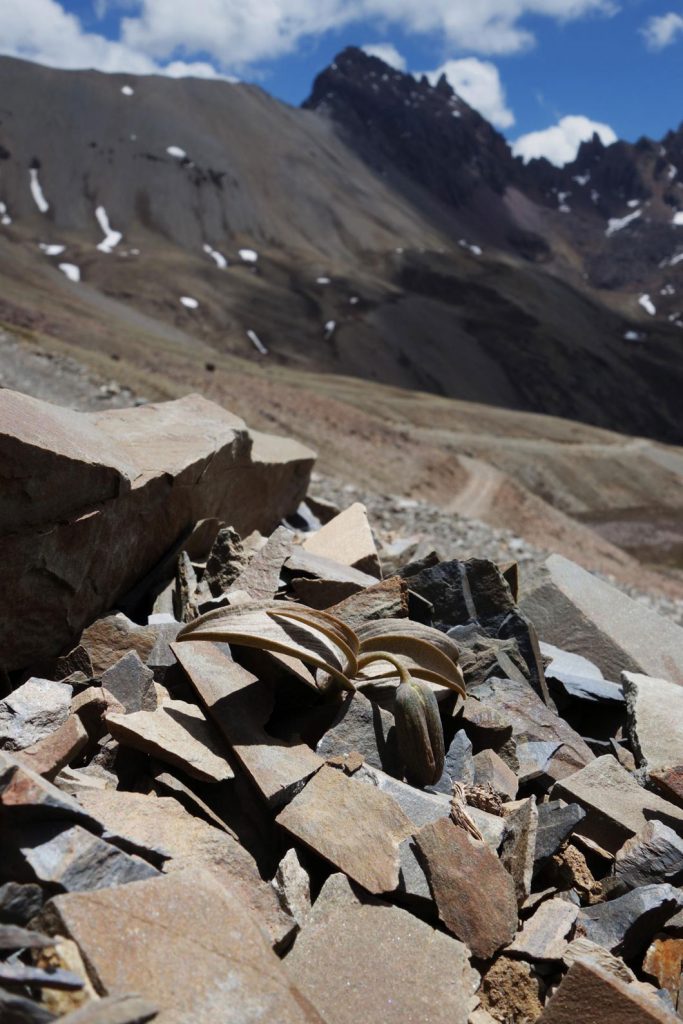
A mountainous plant widely used in Chinese medicine has developed a clever camouflage to blend into its natural environment and escape the increasingly numerous gatherers.
Highly sought after plants
Growing on the rocky slopes of the mountains of Hengduan for thousands of years, Fritillaria delavayi is a perennial plant producing only one flower (bright green) annually from its fifth year. Used for over 2,000 years in traditional Chinese medicine (where the powder produced from its dried bulbs is used to treat heart and lung conditions), it has seen its price skyrocket in recent years due to high demand. This resulted in an intensification of harvests.
Faced with this growing pressure, the species quickly adapted by producing gray and brown leaves and flowers allowing it to blend more effectively into the rocky environment, especially in areas most frequented by gatherers. , and consequently improving its chances of survival.
” Like other camouflaged plants that we have studied, we thought that the evolution of this fritillary’s camouflage was dictated by herbivores, but we did not find such animals in the vicinity. ‘Said Dr Yang niu, co-author of the study recently published in the journal Current Biology. ” We then realized that humans could be the cause. “

As part of this recent work, researchers from theKunming Institute of Botany (China) andUniversity of Exeter (UK) used a spectrometer to measure how closely the color of plants matched their surroundings, and determined the different areas where the plant’s bulbs were most commonly harvested. By cross-checking these data, they found that the places where the plant’s coloring best mimicked its environment corresponded to the most frequented sites.
Effective camouflage
The effectiveness of the camouflage was confirmed by a computer experiment which showed that the subjects took longer to identify the plants which blend in best with their surroundings.
” It is astounding to see the direct impact that humans can have on the evolution and coloring of wild organisms », Declared the professor Martin stevens, of Center for Ecology and Conservation of the’University of Exeter. ” Many plants appear to use camouflage to hide from herbivores that might eat them, but here we see camouflage evolving in response to human pressure.. “
” Humans may have been the source of the evolution of defense strategies for other plant species, but surprisingly little research has looked into this point. », Conclude the researchers.

